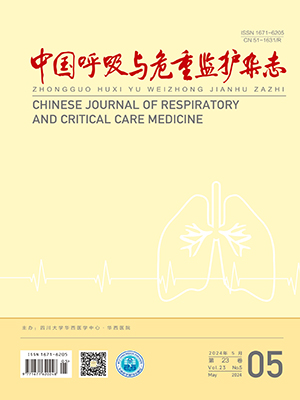Objective To explore the profile and diagnosis value of airway resistances before and after bronchial dilation test ( BDT) in patients with COPD and asthma. Methods Airway resistances before and after BDT were measured in COPD patients and asthma patients with different severity by impulse oscillometry ( IOS) , and the characteristic changes of the two different diseases were analyzed compared with healthy subjects. Results Airway resistance indexes except X5 were higher in the COPD and the asthma patients than those in the healthy subjects before BDT ( P lt; 0. 05) . There were significant differences in airway resistance indexes except X5 and Rc between the mild asthma patients and the moderate to severe asthma patients. Significant difference in Z5, Fres, and Rp were observed in the mild COPD patients
compared with the moderate to severe COPD patients. There were statistical differences in airway resistance indexes except X5 between the two groups before and after BDT both in the COPD and the asthma patients ( P lt;0. 05) . The rates of change in Z5, Fres, R5, and Rp were higher than those of FEV1% pred, especially higher in the asthma patients than in the COPD patients ( P lt; 0. 05) . Significant negative correlations between FEV1% pred and Z5, Fres, R5, Rp were revealed in the COPD and the asthma patients ( P lt;0. 01) .The correlation between Fres and FEV1% pred was most significant in the COPD and the asthma patients ( r = - 0. 561, - 0. 761) . Conclusion Airway resistances measured by IOS is sensitive indicators in detecting the airflow obstruction in COPD and asthma, and is useful in early and differential diagnosis of COPD and asthma.
Citation: XIONG Shuguang,WANG Hui,WU Liang,ZHOU Ling,MEN Yaling.. Changes of Airway Resistances before and after Bronchial Dilation Test in COPD and Asthma. Chinese Journal of Respiratory and Critical Care Medicine, 2010, 9(4): 369-373. doi: Copy




